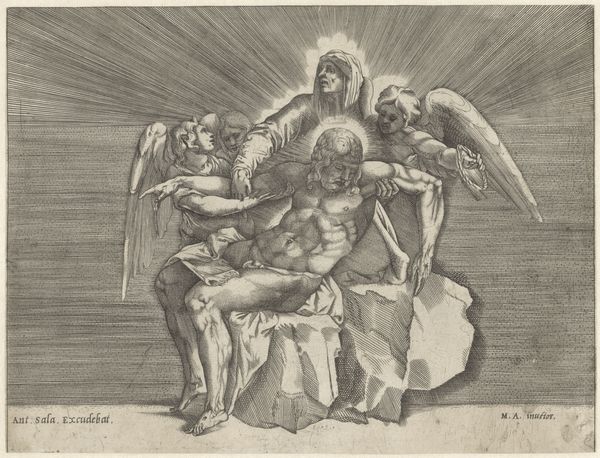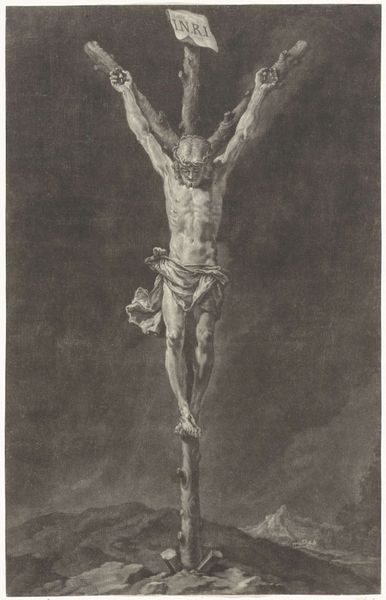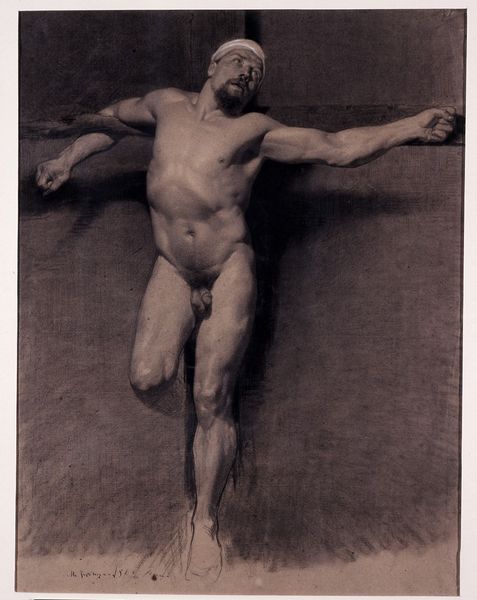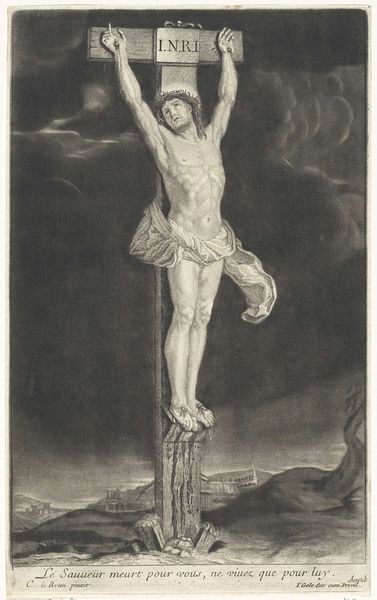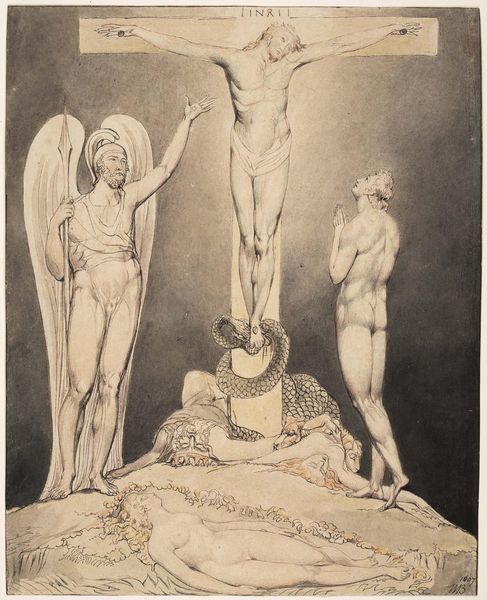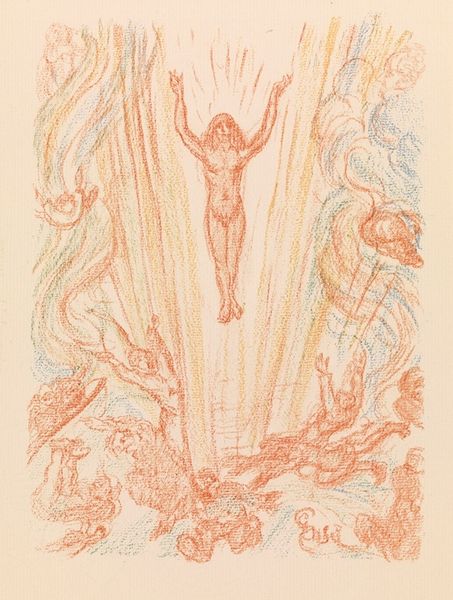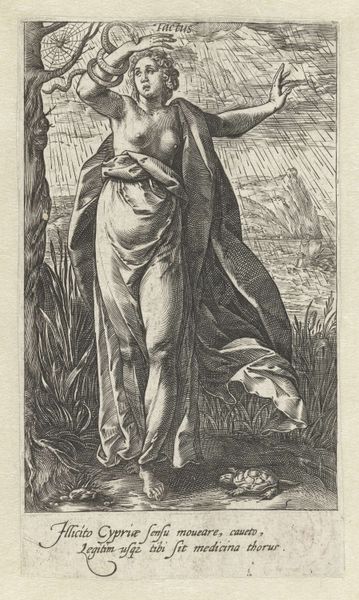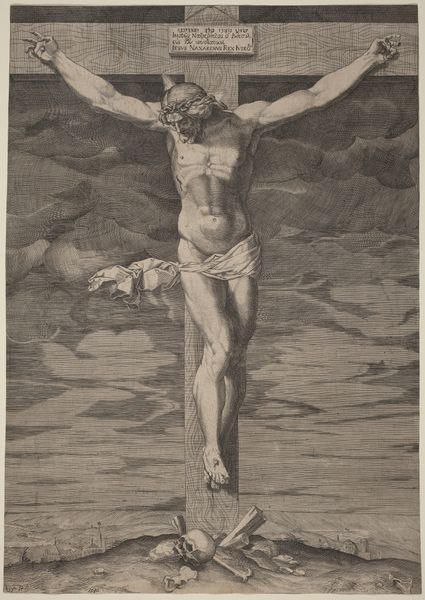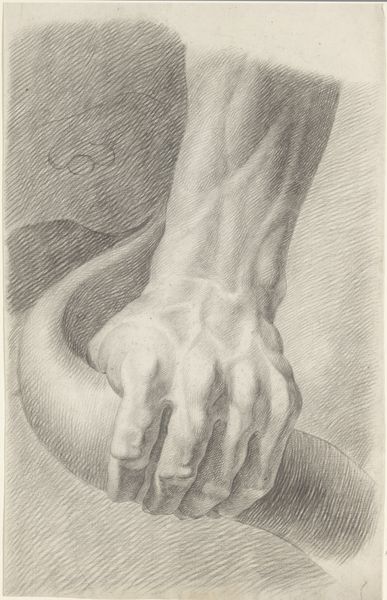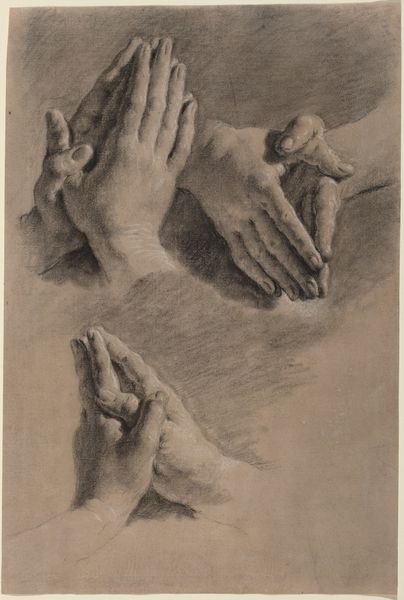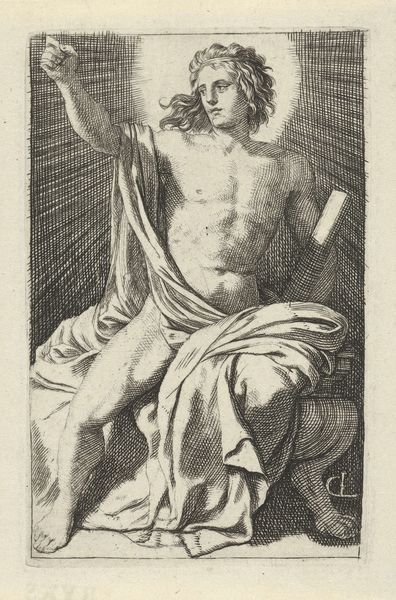
drawing, print, charcoal
#
pencil drawn
#
drawing
# print
#
charcoal drawing
#
figuration
#
pencil drawing
#
line
#
charcoal
#
nude
Copyright: National Gallery of Art: CC0 1.0
Willy Jaeckel made this image, Emporbluherr und Niedergehen, sometime in the first half of the 20th century, using graphite or charcoal on paper. The artist seems to be working and reworking the image, allowing lines to build up and define the volume of the body and the dramatic beams of light that surround it. Looking at the surface, you can see the way Jaeckel has used smudging and blending to soften the contours and create a sense of atmosphere. This is especially noticeable around the figure's torso and the halo of light. The texture here is so smooth it’s almost dreamlike, right? But then your eye might be drawn to the contrasting dark, bold strokes defining the lower part of the figure and the ground, this is how the artist has created a grounded drama. The way Jaeckel plays with light and shadow reminds me of Käthe Kollwitz, who used similar techniques to convey powerful emotions and social commentary. Ultimately, the meaning of this piece remains open to interpretation, inviting us to bring our own experiences and associations to bear.
Comments
No comments
Be the first to comment and join the conversation on the ultimate creative platform.

